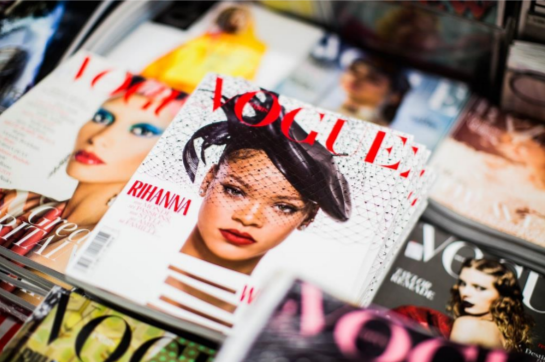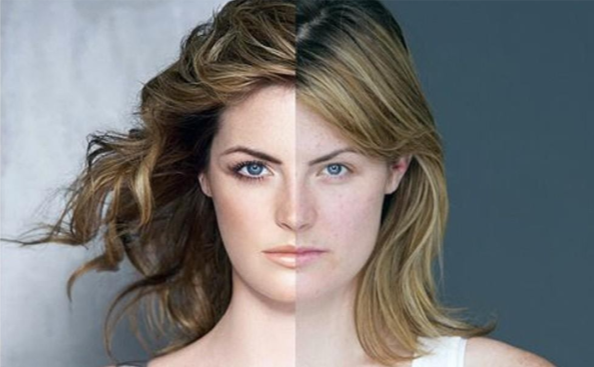2.2: Self-Discrepancy Theory
- Page ID
- 62836
\( \newcommand{\vecs}[1]{\overset { \scriptstyle \rightharpoonup} {\mathbf{#1}} } \)
\( \newcommand{\vecd}[1]{\overset{-\!-\!\rightharpoonup}{\vphantom{a}\smash {#1}}} \)
\( \newcommand{\id}{\mathrm{id}}\) \( \newcommand{\Span}{\mathrm{span}}\)
( \newcommand{\kernel}{\mathrm{null}\,}\) \( \newcommand{\range}{\mathrm{range}\,}\)
\( \newcommand{\RealPart}{\mathrm{Re}}\) \( \newcommand{\ImaginaryPart}{\mathrm{Im}}\)
\( \newcommand{\Argument}{\mathrm{Arg}}\) \( \newcommand{\norm}[1]{\| #1 \|}\)
\( \newcommand{\inner}[2]{\langle #1, #2 \rangle}\)
\( \newcommand{\Span}{\mathrm{span}}\)
\( \newcommand{\id}{\mathrm{id}}\)
\( \newcommand{\Span}{\mathrm{span}}\)
\( \newcommand{\kernel}{\mathrm{null}\,}\)
\( \newcommand{\range}{\mathrm{range}\,}\)
\( \newcommand{\RealPart}{\mathrm{Re}}\)
\( \newcommand{\ImaginaryPart}{\mathrm{Im}}\)
\( \newcommand{\Argument}{\mathrm{Arg}}\)
\( \newcommand{\norm}[1]{\| #1 \|}\)
\( \newcommand{\inner}[2]{\langle #1, #2 \rangle}\)
\( \newcommand{\Span}{\mathrm{span}}\) \( \newcommand{\AA}{\unicode[.8,0]{x212B}}\)
\( \newcommand{\vectorA}[1]{\vec{#1}} % arrow\)
\( \newcommand{\vectorAt}[1]{\vec{\text{#1}}} % arrow\)
\( \newcommand{\vectorB}[1]{\overset { \scriptstyle \rightharpoonup} {\mathbf{#1}} } \)
\( \newcommand{\vectorC}[1]{\textbf{#1}} \)
\( \newcommand{\vectorD}[1]{\overrightarrow{#1}} \)
\( \newcommand{\vectorDt}[1]{\overrightarrow{\text{#1}}} \)
\( \newcommand{\vectE}[1]{\overset{-\!-\!\rightharpoonup}{\vphantom{a}\smash{\mathbf {#1}}}} \)
\( \newcommand{\vecs}[1]{\overset { \scriptstyle \rightharpoonup} {\mathbf{#1}} } \)
\( \newcommand{\vecd}[1]{\overset{-\!-\!\rightharpoonup}{\vphantom{a}\smash {#1}}} \)
\(\newcommand{\avec}{\mathbf a}\) \(\newcommand{\bvec}{\mathbf b}\) \(\newcommand{\cvec}{\mathbf c}\) \(\newcommand{\dvec}{\mathbf d}\) \(\newcommand{\dtil}{\widetilde{\mathbf d}}\) \(\newcommand{\evec}{\mathbf e}\) \(\newcommand{\fvec}{\mathbf f}\) \(\newcommand{\nvec}{\mathbf n}\) \(\newcommand{\pvec}{\mathbf p}\) \(\newcommand{\qvec}{\mathbf q}\) \(\newcommand{\svec}{\mathbf s}\) \(\newcommand{\tvec}{\mathbf t}\) \(\newcommand{\uvec}{\mathbf u}\) \(\newcommand{\vvec}{\mathbf v}\) \(\newcommand{\wvec}{\mathbf w}\) \(\newcommand{\xvec}{\mathbf x}\) \(\newcommand{\yvec}{\mathbf y}\) \(\newcommand{\zvec}{\mathbf z}\) \(\newcommand{\rvec}{\mathbf r}\) \(\newcommand{\mvec}{\mathbf m}\) \(\newcommand{\zerovec}{\mathbf 0}\) \(\newcommand{\onevec}{\mathbf 1}\) \(\newcommand{\real}{\mathbb R}\) \(\newcommand{\twovec}[2]{\left[\begin{array}{r}#1 \\ #2 \end{array}\right]}\) \(\newcommand{\ctwovec}[2]{\left[\begin{array}{c}#1 \\ #2 \end{array}\right]}\) \(\newcommand{\threevec}[3]{\left[\begin{array}{r}#1 \\ #2 \\ #3 \end{array}\right]}\) \(\newcommand{\cthreevec}[3]{\left[\begin{array}{c}#1 \\ #2 \\ #3 \end{array}\right]}\) \(\newcommand{\fourvec}[4]{\left[\begin{array}{r}#1 \\ #2 \\ #3 \\ #4 \end{array}\right]}\) \(\newcommand{\cfourvec}[4]{\left[\begin{array}{c}#1 \\ #2 \\ #3 \\ #4 \end{array}\right]}\) \(\newcommand{\fivevec}[5]{\left[\begin{array}{r}#1 \\ #2 \\ #3 \\ #4 \\ #5 \\ \end{array}\right]}\) \(\newcommand{\cfivevec}[5]{\left[\begin{array}{c}#1 \\ #2 \\ #3 \\ #4 \\ #5 \\ \end{array}\right]}\) \(\newcommand{\mattwo}[4]{\left[\begin{array}{rr}#1 \amp #2 \\ #3 \amp #4 \\ \end{array}\right]}\) \(\newcommand{\laspan}[1]{\text{Span}\{#1\}}\) \(\newcommand{\bcal}{\cal B}\) \(\newcommand{\ccal}{\cal C}\) \(\newcommand{\scal}{\cal S}\) \(\newcommand{\wcal}{\cal W}\) \(\newcommand{\ecal}{\cal E}\) \(\newcommand{\coords}[2]{\left\{#1\right\}_{#2}}\) \(\newcommand{\gray}[1]{\color{gray}{#1}}\) \(\newcommand{\lgray}[1]{\color{lightgray}{#1}}\) \(\newcommand{\rank}{\operatorname{rank}}\) \(\newcommand{\row}{\text{Row}}\) \(\newcommand{\col}{\text{Col}}\) \(\renewcommand{\row}{\text{Row}}\) \(\newcommand{\nul}{\text{Nul}}\) \(\newcommand{\var}{\text{Var}}\) \(\newcommand{\corr}{\text{corr}}\) \(\newcommand{\len}[1]{\left|#1\right|}\) \(\newcommand{\bbar}{\overline{\bvec}}\) \(\newcommand{\bhat}{\widehat{\bvec}}\) \(\newcommand{\bperp}{\bvec^\perp}\) \(\newcommand{\xhat}{\widehat{\xvec}}\) \(\newcommand{\vhat}{\widehat{\vvec}}\) \(\newcommand{\uhat}{\widehat{\uvec}}\) \(\newcommand{\what}{\widehat{\wvec}}\) \(\newcommand{\Sighat}{\widehat{\Sigma}}\) \(\newcommand{\lt}{<}\) \(\newcommand{\gt}{>}\) \(\newcommand{\amp}{&}\) \(\definecolor{fillinmathshade}{gray}{0.9}\)Self-discrepancy theory1 states that people have beliefs about and expectations for their actual and potential selves that do not always match up with what they actually experience.2 To understand this theory, we have to understand the different “selves” that make up our self-concept, which are the actual, ideal, and ought selves. The actual self consists of the attributes that you or someone else believes you actually possess. The ideal self consists of the attributes that you or someone else would like you to possess. The ought self consists of the attributes you or someone else believes you should possess.
These different selves can conflict with each other in various combinations. Discrepancies between the actual and ideal/ought selves can be motivating in some ways and prompt people to act for self-improvement. For example, if your ought self should volunteer more for the local animal shelter, then your actual self may be more inclined to do so. Discrepancies between the ideal and ought selves can be especially stressful. For example, many professional women who are also mothers have an ideal view of self that includes professional success and advancement. They may also have an ought self that includes a sense of duty and obligation to be a full- time mother. The actual self may be someone who does okay at both but doesn’t quite live up to the expectations of either. These discrepancies do not just create cognitive unease—they also lead to emotional, behavioral, and communicative changes.
When we compare the actual self to the expectations of ourselves and others, we can see particular patterns of emotional and behavioral effects. When our actual self doesn’t match up with our own ideals of self, we are not obtaining our own desires and hopes, which can lead to feelings of dejection including disappointment, dissatisfaction, and frustration. For example, if your ideal self has no credit card debt and your actual self does, you may be frustrated with your lack of financial discipline and be motivated to stick to your budget and pay off your credit card bills.
When our actual self doesn’t match up with other people’s ideals for us, we may not be obtaining significant others’ desires and hopes, which can lead to feelings of dejection including shame, embarrassment, and concern for losing the affection or approval of others. For example, if a significant other sees you as an “A” student and you get a 2.8 GPA your first year of college, then you may be embarrassed to share your grades with that person.
When our actual self doesn’t match up with what we think other people think we should obtain, we are not living up to the ought self that we think others have constructed for us, which can lead to feelings of agitation, feeling threatened, and fearing potential punishment. For example, if your parents think you should follow in their footsteps and take over the family business, but your actual self wants to go into the military, then you may be unsure of what to do and fear being isolated from the family.
Finally, when our actual self doesn’t match up with what we think we should obtain, we are not meeting what we see as our duties or obligations, which can lead to feelings of agitation including guilt, weakness, and a feeling that we have fallen short of our moral standard.3 For example, if your ought self should volunteer more for the local animal shelter, then your actual self may be more inclined to do so due to the guilt of reading about the increasing number of animals being housed at the facility. The following is a review of the four potential discrepancies between selves:
- Actual vs. own ideals. We have an overall feeling that we are not obtaining our desires and hopes, which leads to feelings of disappointment, dissatisfaction, and frustration.
- Actual vs. others’ ideals. We have an overall feeling that we are not obtaining significant others’ desires and hopes for us, which leads to feelings of shame and embarrassment.
- Actual vs. others’ ought. We have an overall feeling that we are not meeting what others see as our duties and obligations, which leads to feelings of agitation including fear of potential punishment.
- Actual vs. own ought. We have an overall feeling that we are not meeting our duties and obligations, which can lead to a feeling that we have fallen short of our own moral standards.
Influences on the Self
We have already learned that other people influence our self-concept and self- esteem. While interactions we have with individuals and groups are definitely important to consider, we must also note the influence that larger, more systemic forces have on our self-perception. Social and family influences, culture, and the media all play a role in shaping who we think we are and how we feel about ourselves. Although these are powerful socializing forces, there are ways to maintain some control over our self-perception, our view of ourselves.
Social and Family Influences
Various forces help socialize us into our respective social and cultural groups and play a powerful role in presenting us with options about who we can be. While we may like to think that our self-perception starts with a blank canvas, our perceptions are limited by our experiences and various social and cultural contexts.

Parents and peers shape our self-perceptions in positive and negative ways. Feedback that we get from significant others, which includes close family, can lead to positive views of self.4 In the past few years, however, there has been a public discussion and debate about how much positive reinforcement people should give to others, especially children. The following questions have been raised: Do we have current and upcoming generations that have been overpraised? Is the praise given warranted? What are the positive and negative effects of praise? What is the end goal of the praise? Let’s briefly look at this discussion and its connection to self-perception.
Whether praise is warranted or not is very subjective and specific to each person and context, but in general there have been questions raised about the potential negative effects of too much praise. Motivation is the underlying force that drives us to do things. Sometimes we are intrinsically motivated, meaning we want to do something for the love of doing it or the resulting internal satisfaction. Other times we are extrinsically motivated, meaning we do something to receive a reward or avoid punishment. If you put effort into completing a short documentary for a class because you love filmmaking and editing, you have been largely motivated by intrinsic forces. If you complete the documentary because you want an “A” and know that if you fail your parents will not give you money for your spring break trip, then you are motivated by extrinsic factors. Both can, of course, effectively motivate us. Praise is a form of extrinsic reward, and if there is an actual reward associated with the praise, like money or special recognition, some people speculate that intrinsic motivation will suffer. But what’s so good about intrinsic motivation? Intrinsic motivation is more substantial and long-lasting than extrinsic motivation and can lead to the development of a work ethic and sense of pride in one’s abilities. Intrinsic motivation can move people to accomplish great things over long periods of time and be happy despite the effort and sacrifices made. Extrinsic motivation dies when the reward stops. Additionally, too much praise can lead people to have a misguided sense of their abilities. College professors who are reluctant to fail students who produce failing work may be setting those students up to be shocked when their supervisor critiques their abilities or output once they get into a professional context.5
There are cultural differences in the amount of praise and positive feedback that teachers and parents give their children. For example, teachers give less positive reinforcement in Japanese and Taiwanese classrooms than do teachers in US classrooms. Chinese and Kenyan parents do not regularly praise their children because they fear it may make them too individualistic, rude, or arrogant.6 So the phenomenon of overpraising isn’t universal, and the debate over its potential effects is not resolved.
Research has also found that communication patterns develop between parents and children that are common to many verbally and physically abusive relationships. Such patterns have negative effects on a child’s self-efficacy and self-esteem.7 Attributions are links we make to identify the cause of a behavior. In the case of aggressive or abusive parents, they are not as able to distinguish between mistakes and intentional behaviors, often seeing honest mistakes as intended and reacting negatively to the child. Such parents also communicate generally negative evaluations to their child by saying, for example, “You can’t do anything right!” or “You’re a bad girl.” When children do exhibit positive behaviors, abusive parents are more likely to use external attributions (causes outside of the child) that diminish the achievement of the child by saying, for example, “You only won because the other team was off their game.” In general, abusive parents have unpredictable reactions to their children’s positive and negative behavior, which creates an uncertain and often scary climate for a child that can lead to lower self- esteem and erratic or aggressive behavior. The cycles of praise and blame are just two examples of how the family as a socializing force can influence our self- perceptions. Culture also influences how we see ourselves.
Culture
How people perceive themselves varies across cultures. For example, many cultures exhibit a phenomenon known as the self-enhancement bias8, meaning that we tend to emphasize our desirable qualities relative to other people.9 But the degree to which people engage in self-enhancement varies. A review of many studies in this area found that people in Western countries such as the United States were significantly more likely to self- enhance than people in countries such as Japan. Many scholars explain this variation using a common measure of cultural variation that claims people in individualistic cultures are more likely to engage in competition and openly praise accomplishments than people in collectivistic cultures. The difference in self- enhancement has also been tied to economics, with scholars arguing that people in countries with greater income inequality are more likely to view themselves as superior to others or want to be perceived as superior to others (even if they don’t have economic wealth) in order to conform to the country’s values and norms. This holds true because countries with high levels of economic inequality, like the United States, typically value competition and the right to boast about winning or succeeding, while countries with more economic equality, like Japan, have a cultural norm of modesty.10

Race also plays a role in self-perception. For example, positive self-esteem and self- efficacy tend to be higher in African American adolescent girls than Caucasian girls.11 In fact, more recent studies have discounted much of the early research on race and self-esteem that purported that African Americans of all ages have lower self-esteem than whites. Self-perception becomes more complex when we consider biracial individuals—more specifically those born to couples comprising an African American and a white parent.12 In such cases, it is challenging for biracial individuals to embrace both of their heritages, and social comparison becomes more difficult due to diverse and sometimes conflicting reference groups. Since many biracial individuals identify as and are considered African American by society, living and working within a black community can help foster more positive self-perceptions in these biracial individuals. Such a community offers a more nurturing environment and a buffer zone from racist attitudes but simultaneously distances biracial individuals from their white identity. Conversely, immersion into a predominantly white community and separation from a black community can lead biracial individuals to internalize negative views of people of color and perhaps develop a sense of inferiority. Gender intersects with culture and biracial identity to create different experiences and challenges for biracial men and women. Biracial men have more difficulty accepting their potential occupational limits, especially if they have white fathers, and biracial women have difficulty accepting their black features, such as hair and facial features. All these challenges lead to a sense of being marginalized from both ethnic groups and interfere in the development of positive self-esteem and a stable self-concept.
There are some general differences in terms of gender and how we see ourselves that relate to self-concept, self- efficacy, and envisioning ideal selves. As with any cultural differences, these are generalizations that have been supported by research, but they do not represent all individuals within a group. Regarding self-concept, men are more likely to describe themselves in terms of their group membership, and women are more likely to include references to relationships in their self- descriptions. For example, a man may note that he is a Tarheel fan, a boat enthusiast, or a member of the Rotary Club, and a woman may note that she is a mother of two or a loyal friend.
Regarding self-efficacy, men tend to have higher perceptions of self-efficacy than women.13 In terms of actual and ideal selves, men and women in a variety of countries both described their ideal self as more masculine.14 As was noted earlier, gender differences are interesting to study but are very often exaggerated beyond the actual variations. Socialization and internalization of societal norms for gender differences accounts for much more of our perceived differences than do innate or natural differences between genders. These gender norms may be explicitly stated—for example, a mother may say to her son, “Boys don’t play with dolls”—or they may be more implicit, with girls being encouraged to pursue historically feminine professions like teaching or nursing without others actually stating the expectation.
Media
The representations we see in the media affect our self-concept. The vast majority of media images include idealized representations of attractiveness. Despite the fact that the images of people we see in glossy magazines and on movie screens are not typically what we see when we look at the people around us in a classroom, at work, or at the grocery store, many of us continue to hold ourselves to an unrealistic standard of beauty and attractiveness. Movies, magazines, and television shows are filled with beautiful people, and less attractive actors, when they are present in the media, are typically portrayed as the butt of jokes, villains, or only as background extras.15 Aside from overall attractiveness, the media also offers narrow representations of acceptable body weight.

Researchers have found that only 12 percent of prime-time characters are overweight, which is dramatically less than the national statistics for obesity among the actual US population.16 Further, an analysis of how weight is discussed on prime-time sitcoms found that heavier female characters were often the targets of negative comments and jokes that audience members responded to with laughter. Conversely, positive comments about women’s bodies were related to their thinness. In short, the heavier the character, the more negative the comments, and the thinner the character, the more positive the comments. The same researchers analyzed sitcoms for content regarding male characters’ weight and found that although comments regarding their weight were made, they were fewer in number and not as negative, ultimately supporting the notion that overweight male characters are more accepted in media than overweight female characters. Much more attention has been paid in recent years to the potential negative effects of such narrow media representations. The following “Getting Critical” box explores the role of media in the construction of body image.
In terms of self-concept, media representations offer us guidance on what is acceptable or unacceptable and valued or not valued in our society. Mediated messages, in general, reinforce cultural stereotypes related to race, gender, age, sexual orientation, ability, and class. People from historically marginalized groups must look much harder than those in the dominant groups to find positive representations of their identities in media. As a critical thinker, it is important to question media messages and to examine who is included and who is excluded.
Advertising in particular encourages people to engage in social comparison, regularly communicating to us that we are inferior because we lack a certain product or that we need to change some aspect of our life to keep up with and be similar to others. For example, for many years advertising targeted to women instilled in them a fear of having a dirty house, selling them products that promised to keep their house clean, make their family happy, and impress their friends and neighbors. Now messages tell us to fear becoming old or unattractive, selling products to keep our skin tight and clear, which will in turn make us happy and popular.
“Getting Critical” - Body Image and Self-Perception

Take a look at any magazine, television show, or movie and you will most likely see very beautiful people. When you look around you in your daily life, there are likely not as many glamorous and gorgeous people. Scholars and media critics have critiqued this discrepancy for decades because it has contributed to many social issues and public health issues ranging from body dysmorphic disorder, to eating disorders, to lowered self-esteem.
Much of the media is driven by advertising, and the business of media has been to perpetuate a “culture of lack.” This means that we are constantly told, via mediated images, that we lack something. In short, advertisements often tell us we don’t have enough money, enough beauty, or enough material possessions. Over the past few decades, women’s bodies in the media have gotten smaller and thinner, while men’s bodies have gotten bigger and more muscular. At the same time, the US population has become dramatically more obese. As research shows that men and women are becoming more and more dissatisfied with their bodies, which ultimately affects their self-concept and self-esteem, health and beauty product lines proliferate and cosmetic surgeries and other types of enhancements become more and more popular. From young children to older adults, people are becoming more aware of and oftentimes unhappy with their bodies, which results in a variety of self- perception problems.
Exercises
- How do you think the media influences your self-perception and body image?
- Describe the typical man that is portrayed in the media. Describe the typical woman that is portrayed in the media. What impressions do these typical bodies make on others? What are the potential positive and negative effects of the way the media portrays the human body?
- Find an example of an “atypical” body represented in the media (a magazine, TV show, or movie). Is this person presented in a positive, negative, or neutral way? Why do you think this person was chosen?
References
- Erving Goffman, The Presentation of Self in Everyday Life (New York, NY: Anchor Books, 1959).
- E. Tory Higgins, “Self-Discrepancy: A Theory Relating Self and Affect,” Psychological Review 94, no. 3 (1987): 320–21.
- E. Tory Higgins, “Self-Discrepancy: A Theory Relating Self and Affect,” Psychological Review 94, no. 3 (1987): 322–23.
- Owen Hargie, Skilled Interpersonal Interaction: Research, Theory, and Practice (London: Routledge, 2011), 99.
- Owen Hargie, Skilled Interpersonal Interaction: Research, Theory, and Practice (London: Routledge, 2011), 105
- Anna Wierzbicka, “The English Expressions Good Boy and Good Girl and Cultural Models of Child Rearing,” Culture and Psychology 10, no. 3 (2004): 251–78.
- Wendy Morgan and Steven R. Wilson, “Explaining Child Abuse as a Lack of Safe Ground,” in The Dark Side of Interpersonal Communication, eds. Brian H. Spitzberg and William R. Cupach (Mahwah, NJ: Lawrence Erlbaum Associates, 2007), 341.
- Barbara M. Byrne, Measuring Self-Concept across the Life Span: Issues and Instrumentation (Washington, DC: American Psychological Association, 1996), 5.
- Steve Loughnan et al., “Economic Inequality Is Linked to Biased Self-Perception,” Psychological Science 22, no. 10 (2011): 1254.
- Steve Loughnan et al., “Economic Inequality Is Linked to Biased Self-Perception,” Psychological Science 22, no. 10 (2011): 1257.
- Michelle B. Stockton et al., “Self-Perception and Body Image Associations with Body Mass Index among 8–10- Year-Old African American Girls,” Journal of Pediatric Psychology 34, no. 10 (2009): 1144.
- Dorcas D. Bowles, “Biracial Identity: Children Born to African-American and White Couples,” Clinical Social Work Journal 21, no. 4 (1993): 418–22.
- Owen Hargie, Skilled Interpersonal Interaction: Research, Theory, and Practice (London: Routledge, 2011), 105.
- Deborah Best and Jennifer J. Thomas, “Cultural Diversity and Cross-Cultural Perspectives,” in The Psychology of Gender, 2nd ed., eds. Alice H. Eagly, Anne E. Beall, and Robert J. Sternberg (New York, NY: Guilford Press, 2004), 296–327.
- Gordon L. Patzer, Looks: Why They Matter More than You Ever Imagined (New York, NY: AMACOM, 2008), 147.
- Gordon L. Patzer, Looks: Why They Matter More than You Ever Imagined (New York, NY: AMACOM, 2008), 147– 48.


